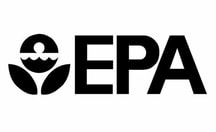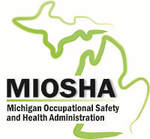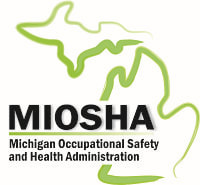 Chemical Accident Prevention is high on everyone’s priority list. The EPA even has a rule for it. The Risk Management Plan (RMP) Rule (40 CFR Part 68) governs accident prevention under Section 112(r) of the Clean Air Act Amendments. The “RMP Rule” established regulations that facilitate accident prevention at facilities that use certain highly hazardous chemicals listed in the regulation. For example, many facilities that use anhydrous ammonia are required to prepare and implement an RMP at their location, and must submit the RMP to the EPA every 5 years. Whoa, you say. What’s in an RMP? An RMP is a set of documents and procedures that govern the following actions at a facility when that facility has the highly hazardous chemicals in a process in quantities above a Threshold Quantity. For ammonia refrigeration the threshold is 10,000 pounds.
Why would a facility want to prepare an RMP? First of all, because these plans provide your local police, fire and emergency response personnel with information needed so that they can respond to an incident at your facility in the most effective way possible. And, Secondly, because these plans must be submitted to EPA. They must also be resubmitted every five years. FUN FACT Did you know that the Environmental Protection Agency implements the Risk Management Plan (RMP) Rule in Michigan – not the Michigan Department of Environmental Quality?  The OSHA PSM Standard (29 CFR 1910.119) is a “performance” standard rather than a “prescriptive” standard. In other words, the standard doesn’t tell you exactly what to do, such as when to collect a sample or log temperature. Rather, the PSM Standard requires you to achieve a certain level of performance. Then it is up to you to figure out how to maintain performance at that level. MIOSHA has adopted these regulations in GI Part 91 and OH Part 591. The PSM Standards consist of 14 “Elements.” These “elements” are broad categories of compliance, like “Training” and “Employee Participation", each having its own set of requirements and goals that you set and then meet. “14 elements!,” you sigh and think, “how am I going to get all of this work done when there is only one of me!” Let’s begin to answer with this – start with OSHA’s guide for small businesses entitled, Process Safety Management for Small Businesses. A copy can be found here. In this guide OSHA identifies Process Safety Information (PSI), Process Hazards Analysis (PHA), Training, Mechanical Integrity (MI), and Compliance Audits as the elements most relevant to hazards associated with small businesses. Although all 14 elements will eventually need to be completed, this is a good place to start your PSM Program development. Why do you think OSHA started with these elements? Well, because by doing them you will be successful at making a good product and preventing your employees and neighbors from exposure to a highly hazardous chemical. Process Safety Information (PSI) PSI includes a variety of information about your system, such as design and operating specifications for piping, vessels, valves and gauges. It includes drawings (P&IDs) showing the system layout, process flow and safety systems. This information will help your operators know when the system is operating in the sweet spot and when something is going wrong? The P&IDs will enable you to look up information about your system and see how its pieces and parts fit together and flow. Your maintenance team will be able to order and install the right equipment because they will know what design specifications they need for replacement parts. It is fairly straightforward. Your PSI and all the information about your system needs to be accurate and kept up to date because the rest of your PSM program is built around the PSI information. Process Hazard Analysis Why do you need a PHA? Why can’t I just copy the PHA from the plant down the road that is really similar to mine? Because one size does not fit all. Even though some systems are considered “Off-the-shelf,” your equipment numbering system will likely be different and your system probably won’t have exactly the same configuration for piping, valves and safety equipment. Each system is different, so you cannot just copy another PHA and call it your own. Besides, your team has to go through the exercise. The PHA is a great learning and exploratory opportunity and a great tool for identifying weaknesses, even in the best systems. And, believe me, by the end of the PHA your team will discover weaknesses and things they didn’t know about before the exercise started. Mechanical Integrity Effective preventative maintenance is one of the best ways to keep the highly hazard substance in your PSM regulated system and avoid deadly and costly accidents associated with worn valves, piping and gauges. This includes inspections of system components, exercising valves, ensuring gauges are working correctly and timely replacement of worn components. Training of the maintenance technicians keeps them safe and ensures replacements and repairs are done according to established codes and specifications. Training Training is obvious, I think. Does a front desk receptionist need the same training as a maintenance technician? No. Staff and operations personnel need to be trained to the level of their involvement with the system. Everyone, at a minimum, needs to understand what their responsibilities are and what to do during normal operations and during emergencies. Office personnel need to know the dangers of the chemicals they are working near and what to do during an emergency. Compliance Audits If the suggested elements in the small business guidance document supposedly have something to do with the information about the system, why are compliance audits included in this list? Probably because an audit is a good place to figure out where you are in the whole process of developing a PSM Program. Or if you happen to have a mature program, an audit is a good way to have a fresh set of eyes review the program to identify opportunities for improvement or to check if the documents describe the activities actually implemented at your facility. Remember the old industry adage, Plan Do Check? This is the check part. Operating Procedures Another element I feel is important, but, is not in the OSHA guide as one of the five important elements mentioned earlier, is standard operating procedures (SOPs). This element, when done correctly, helps you make good product or refrigerate efficiently. If your procedures are wrong or ignored, it can result in employee injuries, equipment damage, raw material wastes and allot of wasted process time and money. On top of that, training of operators is critical, so they know how to keep the system in the sweet spot, how to recognize out-of-control conditions and then how to respond in a way that shuts the system down safely or brings it back under control. Oh, and they are a great training tool, too. So, you tell me if operating procedures are important or not. It is a big job, but it doesn’t have to be overwhelming. By now you realize you alone cannot develop and implement a PSM program. It takes a team of operators, mechanics, engineers, their managers and of course, you, the compliance professional to get it all done. SRM’s PSM professionals have been helping clients with their PSM programs for 20 years. We can evaluate your program, prioritize your opportunities for improvement and help you ensure your PSM program is effective and compliant. Just give us a call and we’ll show you how!  If your facility uses or maintains a highly hazardous chemical in quantities above the threshold limit (often 10,000 pounds or more), then the Process Safety Management regulations apply to you. Never heard of Process Safety Management? Process Safety Management, or PSM as the program is referred to, is an OSHA Performance Standard, which means that the regulations are not prescriptive. Instead, OSHA allows a facility to set up its program in a way that makes sense for the facility, as long as the program performs satisfactorily, the facility meets the regulatory requirements, and it keeps the highly hazardous materials within their containers. The PSM regulations are outlined in 29 CFR 1910.119. MIOSHA has adopted these regulations in GI Part 91 and OH Part 591. We aren’t going to lie. There is a lot to digest and understand. But, OSHA provides a lot of useful information on its Process Safety Management webpage. It even published a Process Safety Management for Small Businesses brochure in 2017. You can find the brochure here. PSM applies to toxic and flammable materials maintained in quantities above the thresholds listed in the standard. The OSHA list of highly hazardous chemicals can be found here. The MIOSHA list and regulations can be found here. In May 2016, OSHA issued a new Letter of Interpretation for the Process Safety Management (PSM) standard's Recognized and Generally Accepted Good Engineering Practices (RAGAGEP) requirements originally outlined in the PSM Standard (29 CFR 1910.119). OSHA notes that this “memorandum rescinds and replaces the memorandum of the same title dated June 5, 2015.” It is intended to clarify OSHA’s policy but does not include any substantive changes to their enforcement policy related to RAGAGEPs. OSHA does a good job of adding details into the policy that we as practitioners have known for quite some time. The details provided help in making requirements clearer. There is a lot of good information in the revised policy. I just want to touch on a few things here. The first important change to note is this document is now referred to as an “Enforcement Policy” rather than a letter of interpretation or memorandum. There can no longer be any doubt or misinterpretation that the information provided is a requirement rather than just a guideline.
Secondly, it is well known that the PSM regulation is considered a “performance oriented standard.” That means that the regulation does not necessarily outline exactly what you have to do. The Standard defines what has to be accomplished, but it doesn’t tell you exactly how you get there. Instead, it is up to the Employer to decide which codes, standards and practices it will put in place, implement and monitor. Both the 2015 and 2016 versions of the policy provide examples of RAGAGEPs, but the 2016 version clearly states that the items provided in the policy are “examples” and that “employers select the RAGAGEPs they apply in their covered processes” and then demonstrate that they are meeting them. It also notes that there may be more than one code or standard necessary to meet all of the hazards presented by a particular process. Both versions state that an employer should not “cherry pick” the provisions of codes and standards because codes and standards are meant to be implemented as a whole. Selectively choosing a portion of a code or standard could result in inadequate control of a process hazard. But, the 2016 version also acknowledges that internal standards incorporating select provisions may be adequate, but OSHA would review these on an individual basis. Lastly, documentation is key. I think we all already knew this. But oftentimes, when reviewing inspection and testing procedures, there is no mention of where the inspection and test schedule came from. The 2016 policy clearly states that OSHA compliance officers will review the employer’s written inspection and testing procedures to determine the selected RAGAGEP. Identifying all the source documents (e.g., codes, standards, etc.) in the company’s written procedures is a must. It cannot be “understood” that refrigeration systems comply with IIAR standards, it must be stated as such in a procedure, and the standards must be referenced. To read the entire memorandum on the OSHA website, click here. On November 30, 2011, the Occupational Safety and Health Administration (OSHA) issued a new National Emphasis Program (NEP) for chemical facilities. This instruction (Directive Number CPL 03-00-014) expands the PSM-Covered Chemical Plants NEP to all facilities Nationwide.The purpose of the program is to reduce or eliminate workplace hazards and to protect workers from catastrophic releases of highly hazardous chemicals. The NEP identifies two categories of facilities: facilities likely to have ammonia used for refrigeration and all other facilities.
Are you ready? If you need assistance determining whether you are required to implement a PSM and/or RMP prevention program, or need help developoing your program, contact Vicki Schneider at SRM at (614) 505-1209. |
|


 RSS Feed
RSS Feed
